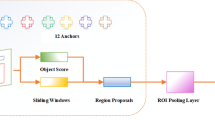Abstract
The accuracy of the fibrotic plaque segmentation is vital in identifying the coronary artery stenosis. In this paper, we address an automated approach (APDE-GMM) for separating the fibrotic plaque area of intravascular optical coherence tomography (IV-OCT) images. Under this approach, an objective function consisting of a new energy functional with Rayleigh distribution and the negative log-likelihood function of Gaussian mixture model (GMM) is developed. Also, the study presents an adaptive diffusivity function where the gradient threshold can be associated to suppress the effect of speckle noise. The parameter estimation is carried out by the expectation–maximization technology. In addition, this paper derives a fourth-order partial differential equation (PDE) via Euler–Lagrange equation to obtain the optimal solutions. It has been compared to other segmentation approaches on synthetic and clinical IV-OCT images. The results demonstrate that APDE-GMM segmentates more accurately.









Similar content being viewed by others
References
Zahnd, G., Hoogendoorn, A., Combaret, N., et al.: Contour segmentation of the intima, media, and adventitia layers in intracoronary OCT images: application to fully automatic detection of healthy wall regions. Int. J. Comput. Assist. Radiol. Surg. 12, 1923–1936 (2017)
Guo, X., Tang, D., David, M., et al.: A machine learning-based method for intracoronary OCT segmentation and vulnerable coronary plaque cap thickness quantification. Int. J. Comput. Methods 15(1), 1–12 (2018)
Xu, M., Cheng, J., Wong, D.W.K.: Automatic image classification in intravascular optical coherence tomography images. In: Proceedings of IEEE Region 10 Conference (TENCON), pp. 1544–1547 (2016)
Celi, S., Berti, S.: In-vivo segmentation and quantification of coronary lesions by optical coherence tomography images for a lesion type definition and stenosis grading. Med. Image Anal. 18(7), 1157–1168 (2014)
Xu, M., Cheng, J., Li, A., et al: Fibroatheroma identification in intravascular optical coherence tomography images using deep features. In: Proceedings of Annual International Conference of the IEEE Engineering in Medicine and Biology Society, pp. 1501–1504 (2017)
Ji, Z., Huang, Y., Xia, Y., et al.: A robust modified Gaussian mixture model with rough set for image segmentation. Neurocomputing 266, 550–565 (2017)
Cheriyan, M.M., Prawin, A.M., Kumar, A.: Blind source separation with mixture models—a hybrid approach to MR brain classification. Magn. Reson. Imaging 54, 137–147 (2018)
Banerjeel, A., Maji, P.: Constrained Students’ \(t\)-distribution based mixture model for robust image segmentation. J. Math. Imaging Vis. 60(3), 355–381 (2018)
Liu, Z., Song, Y., Xie, C., et al.: A new clustering method of gene expression data based on multivariate Gaussian mixture models. Signal Image Video Process. 10(2), 359–368 (2016)
Ahmadvand, A., Kabiri, P.: Multispectral MRI image segmentation using Markov random field model. Signal Image Video Process. 10(2), 251–258 (2016)
Barbu, T.: Nonlinear fourth-order hyperbolic PDE-based image restoration scheme. In: Proceedings of IEEE International Conference on e-Health and Bioengineering, pp. 19–21 (2015)
Barbu, T.: A hybrid nonlinear fourth-order PDE-based image restoration approach. In: Proceedings of International Conference on System Theory, Control and Computing, pp. 754–756 (2016)
Barbu, T.: Additive noise removal using a nonlinear hyperbolic PDE-based model. In: Proceedings of International Conference on Development and Application Systems, pp. 1–5 (2018)
Heydari, M., Karami, M.R., Babakhani, A.: A new adaptive coupled diffusion PDE for MRI Rician noise. Signal Image Video Process. 10(7), 1212–1218 (2016)
Soorajkumar, R., Kumar, P.K., Girish, D.R., et al: Fourth order PDE based Ultrasound despeckling using ENI classification. In: Procedings of International Conference on Signal Processing and Communication, pp. 1–5 (2016)
Kumar, R., Srivastava, S., Srivastava, R.: A fourth order PDE based fuzzy c-means approach for segmentation of microscopic biopsy images in presence of poisson noise for cancer detection. Comput. Methods Programs Biomed. 146, 59–68 (2017)
Schmitt, J.M.: Optical coherence tomography (OCT): a review. IEEE J. Sel. Top. Quantum Electron. 5(4), 1205–1215 (1999)
You, Y.L., Kaveh, M.: Fourth-order partial differential equations for noise removal. IEEE Trans. Image Process. 9(10), 1723–1730 (2000)
Titterington, D.M., Smith, A.F.M., Makov, U.E.: Statistical Analysis of Finite Mixture Distributions. Wiley, Hoboken (1985)
Trivedi, M.M., Bezdek, J.C.: Low-level segmentation of aerial images with fuzzy clustering. IEEE Trans. Syst. Man Cybern. 16(4), 589–598 (1986)
Sfikas, G., Nikou, C., Galatsanos, N.: Robust image segmentation with mixtures of Student’s-\(t\) distributions. In: Proceedings of IEEE International Conference on Image Processing, pp. 273–276 (2007)
Nguyen, T.M., Wu, Q.M.J.: Fast and robust spatially constrained Gaussian mixture model for image segmentation. IEEE Trans. Circuits Syst. Video Technol. 23(4), 621–635 (2013)
Bi, H., Tang, H., Yang, G., et al.: Accurate image segmentation using Gaussian mixture model with saliency map. Pattern Anal. Appl. 21(3), 869–878 (2018)
Acknowledgements
The authors would like to thank the anonymous reviewers and the associate editor for their insightful comments that significantly improved the quality of this paper. This work was supported by the National Nature Science Foundation of China under Grant 61872143.
Author information
Authors and Affiliations
Corresponding author
Additional information
Publisher's Note
Springer Nature remains neutral with regard to jurisdictional claims in published maps and institutional affiliations.
Rights and permissions
About this article
Cite this article
Wang, P., Zhu, H. & Ling, X. Intravascular optical coherence tomography image segmentation based on Gaussian mixture model and adaptive fourth-order PDE. SIViP 14, 29–37 (2020). https://doi.org/10.1007/s11760-019-01520-6
Received:
Revised:
Accepted:
Published:
Issue Date:
DOI: https://doi.org/10.1007/s11760-019-01520-6




